EDITOR’S NOTE: Traveleater Alejandro Regidor, a Costa Rican chef from San José, shares with us twelve traditional dishes to look for on your next visit to Costa Rica.
When you visit another country, an easy way to get to know the culture is through its food. Every dish can teach you a fascinating aspect of the culture and make people bond in a friendlier way.
Traditional Costa Rican food is a must-try if you visit this vibrant country located between Nicaragua up north and Panama in the south. It’s a great starting point to introduce you to the diversity of Latin American cuisine.
Sometimes, you don’t know where to begin and what you should do when you first visit Costa Rica. But no worries, the people in Costa Rica are well-known for their hospitality and their traditional cuisine. Food is a great way to connect with us Costa Ricans as it forms a lively and vibrant part of our day-to-day lives.
COSTA RICAN FOOD QUICK LINKS
If you’re planning a trip to Costa Rica and want to learn more about the cuisine, then you may be interested in joining a food tour or taking a cooking class.
TOURS & OTHER SERVICES
- Food Tours: Food and Wine/Drinking Tours in Costa Rica
- Cooking Classes: Cooking Classes in Costa Rica
- eSIM: Costa Rica eSIM
Save This on Pinterest!
No time to read this guide on the foods in Costa Rica? Click on the save button and pin it for later!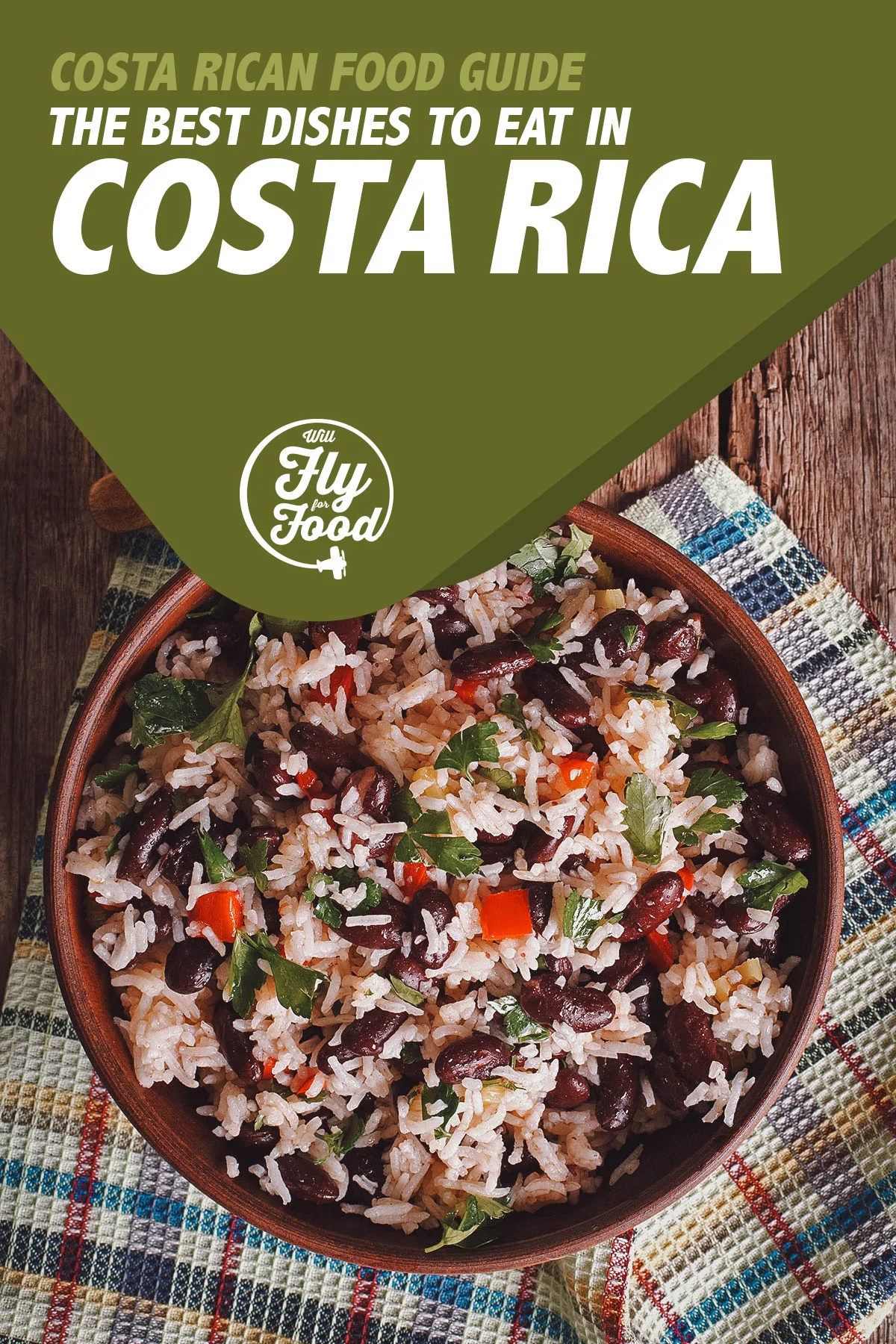
Photo by lenyvavsha
WHAT IS TRADITIONAL COSTA RICAN FOOD?
Despite being a small country, the foods in Costa Rica combine the diversity and richness of influences that have come together over thousands of years.
As a volcanic country, you might feel a few small earthquakes during your visit to Costa Rica, but you’ll also find an amazing variety of fresh and delicious fruits and vegetables, most of which are available year-round. Some of Costa Rica’s most popular produce include tomatoes, plantains, potatoes, cassava, mangoes, pineapples, and several types of squash.
Traditional Costa Rican cuisine can be defined as a mix of indigenous Mesoamerican food cultures (centered around corn as the main ingredient of the meal) and the combination of techniques from African, Asian, and European cuisines.
Thanks to all these influences, you’ll be able to find very different kinds of dishes in Costa Rica. You’ll find corn products like tortillas, vegetable stews, and rice mixed with chicken, meat, or beans. It’s a pattern that’s common to many Latin American cuisines.
THE BEST OF TRADITIONAL COSTA RICAN CUISINE
There are plenty of dishes to try in Costa Rica. Some flavors may vary depending on the places you visit, so each of them holds special value to the Costa Rican people in each city or town you visit. It’s not a spicy or piquant cuisine and is easily enjoyable for any palate.
And remember, the foods in Costa Rica work amazingly well as an ice breaker. During your stay, I strongly encourage you to eat at “sodas”, which are traditional diners found throughout Costa Rica. They’re affordable eateries where you can enjoy local Costa Rican flavors while bonding with the locals.
1. Palmito
Palmito or palm heart comes from the inside part of the bud of the palm tree. It’s an indigenous ingredient that is now considered a newfound element of Costa Rican gastronomy.
Palmito has a distinctive acidic flavor, used in traditional preparations like soups, salads, picadillos, and casseroles. The most common way to use it is in ensalada de palmito, a Costa Rican salad consisting of boiled fresh or canned palm hearts mixed with cherry tomatoes and lettuce. It’s served with different dressings and commonly eaten as a side dish with casado.
Another great dish is arroz con palmito. It combines palmito with the European tradition of rice gratin. Bechamel sauce with pieces of palmito form the base of this Costa Rican dish. They’re mixed with rice and topped with mozzarella and baked until golden. For some people, this dish is a regular choice for lunch or dinner.
It’s important to point out that palmito should not be confused with palmito cheese, a delicious stretchy cheese with a soft and mildly acidic flavor.
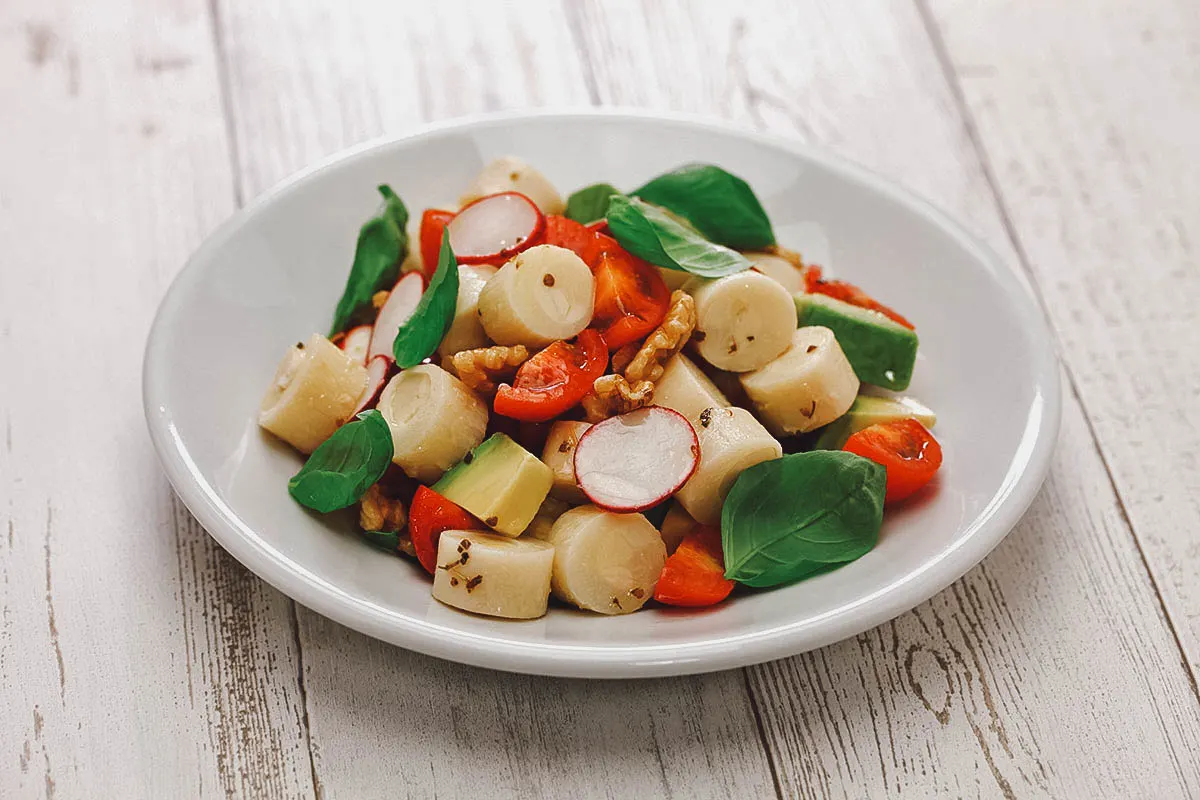
Photo by asimojet
2. Sopa de Pejibaye
Another ingredient obtained from local Costa Rican palm tree varieties is pejibaye or palm fruit. Used as staple food in Costa Rica, pejibaye is a mildly flavored starchy fruit with a unique texture.
Pejibaye is easy to find in markets and supermarkets. You can find them pre-cooked and ready to be peeled and consumed. They can be eaten plain or with mayonnaise, or used as an ingredient in many Costa Rican dishes like sopa de pejibaye.
Sopa de pejibaye is a simple but rich soup that’s considered a staple dish in contemporary Costa Rican cuisine. The recipe was made famous by renowned local chef Isabel Campabadal. It’s made with pejibaye, chicken stock, and cream which are blended together and sieved until a silky texture is achieved. The soup is then topped with fresh cilantro before serving.
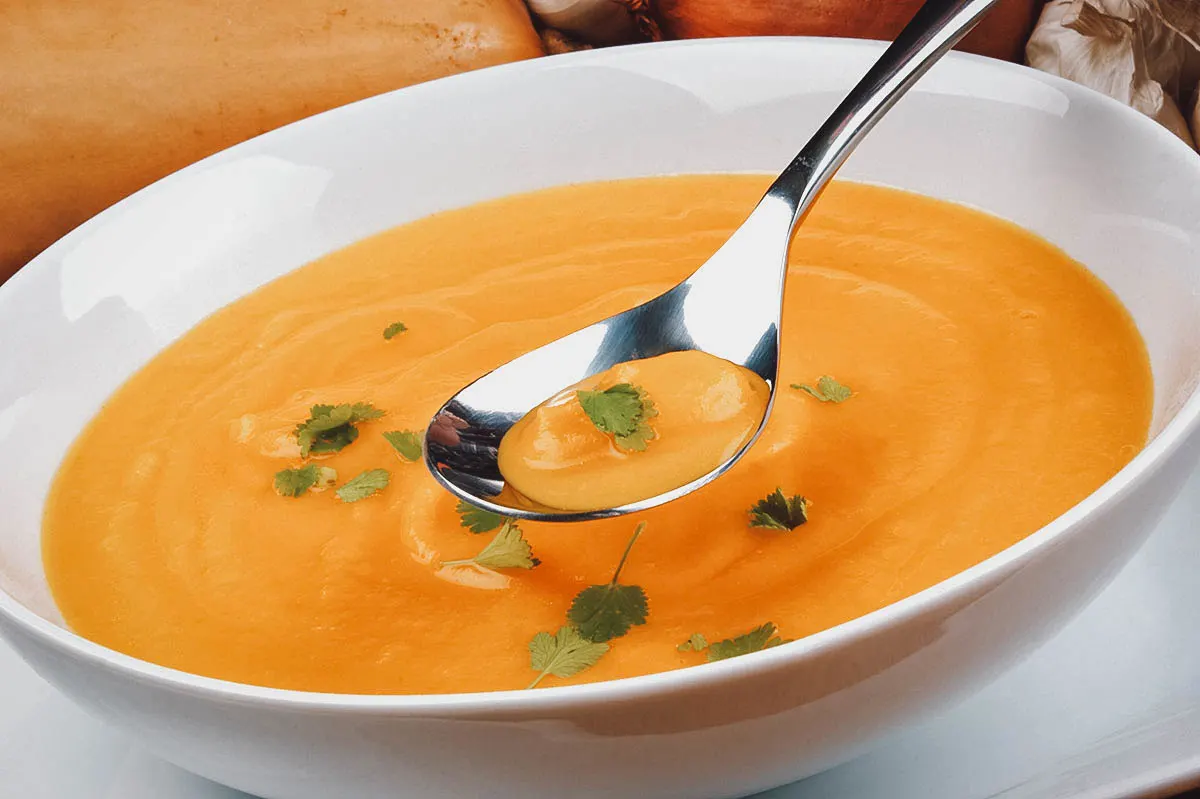
Photo by Szakaly
3. Sopa Negra (Black Bean Soup)
Influenced by indigenous cultures from Mexico, this delicious and creamy Costa Rican black bean soup is made from black beans simmered with a host of ingredients like cilantro, oregano, bell peppers, and onions. It’s often topped with a hard-boiled egg and fresh cilantro leaves and typically served as an entree, especially during cold nights.
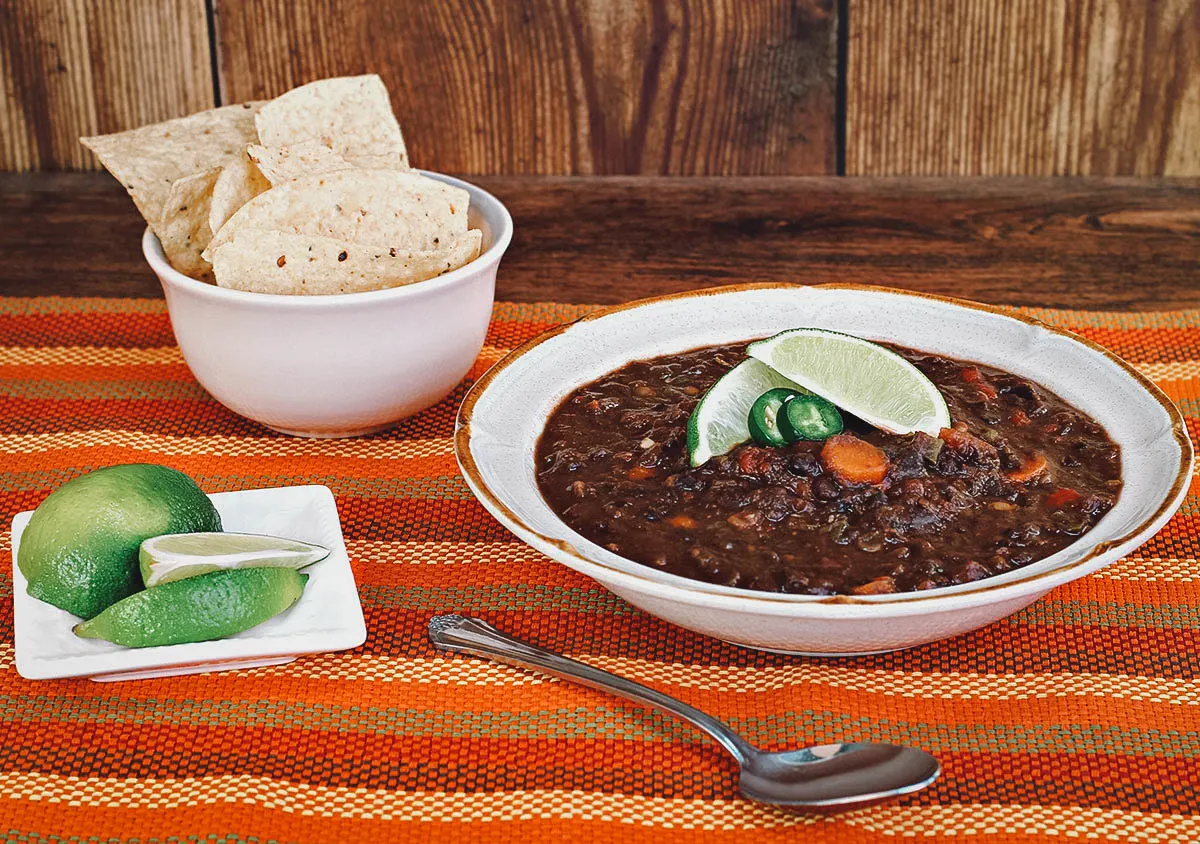
Photo by rojoimages
4. Pozole
Pozole is a hearty and filling Costa Rican stew made from pork, hominy, cilantro, bell peppers, and achiote. Served with corn tortillas, the ingredients are slowly cooked together until the meat becomes tender and delicious.
It’s common to find pozole in traditional religious celebrations and gatherings known as “turnos” in small towns and traditional restaurants all around Costa Rica. This traditional Costa Rican dish should not be confused with Mexican pozole which is spicy.
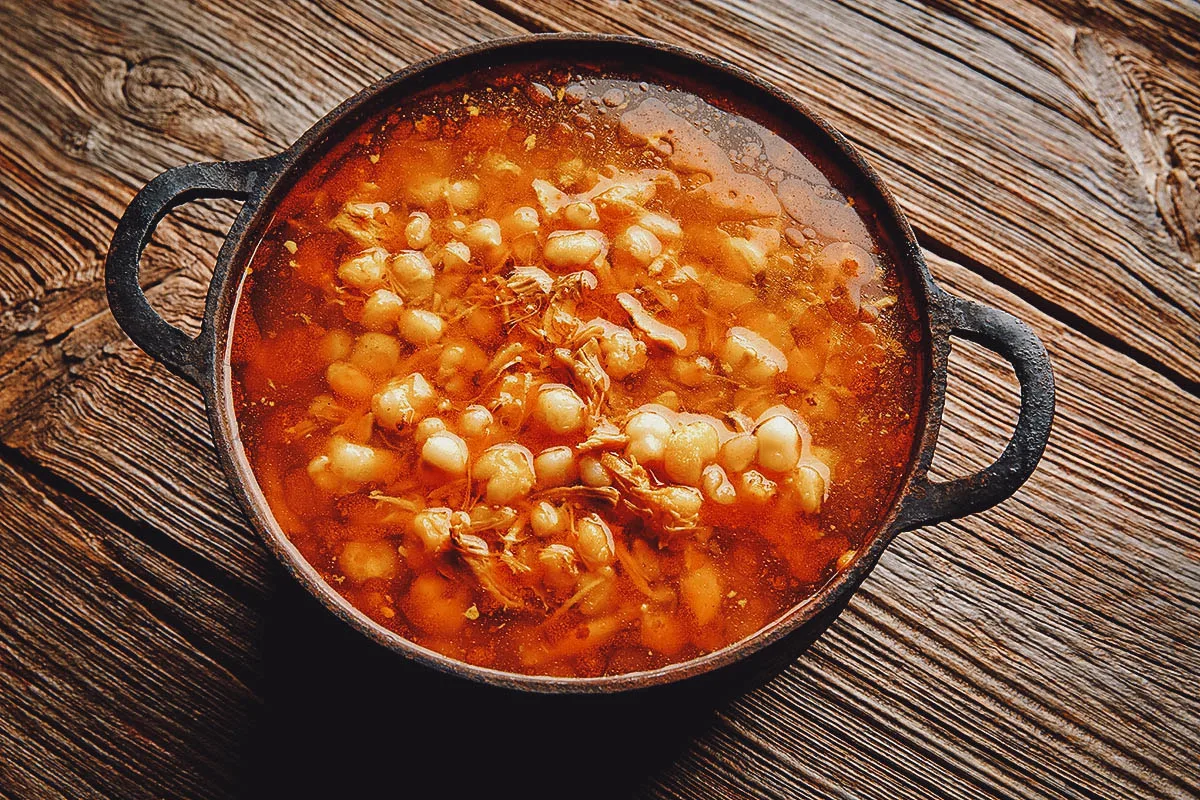
Photo by lunamarina
5. Empanada
Popular in many Latin American countries like Argentina, Venezuela, and Peru, the perfect comfort food in Costa Rica is undeniably the empanada. This crispy deep-fried snack is traditionally made with seasoned corn dough filled with shredded beef or chicken, potato stew, cheese, and beans.
Almost every Costa Rican restaurant and soda sells empanadas. If you see it on a menu, then you may want to try empanadas arregladas. It’s a type of empanada filled with fresh cabbage salad, mayo, and ketchup.
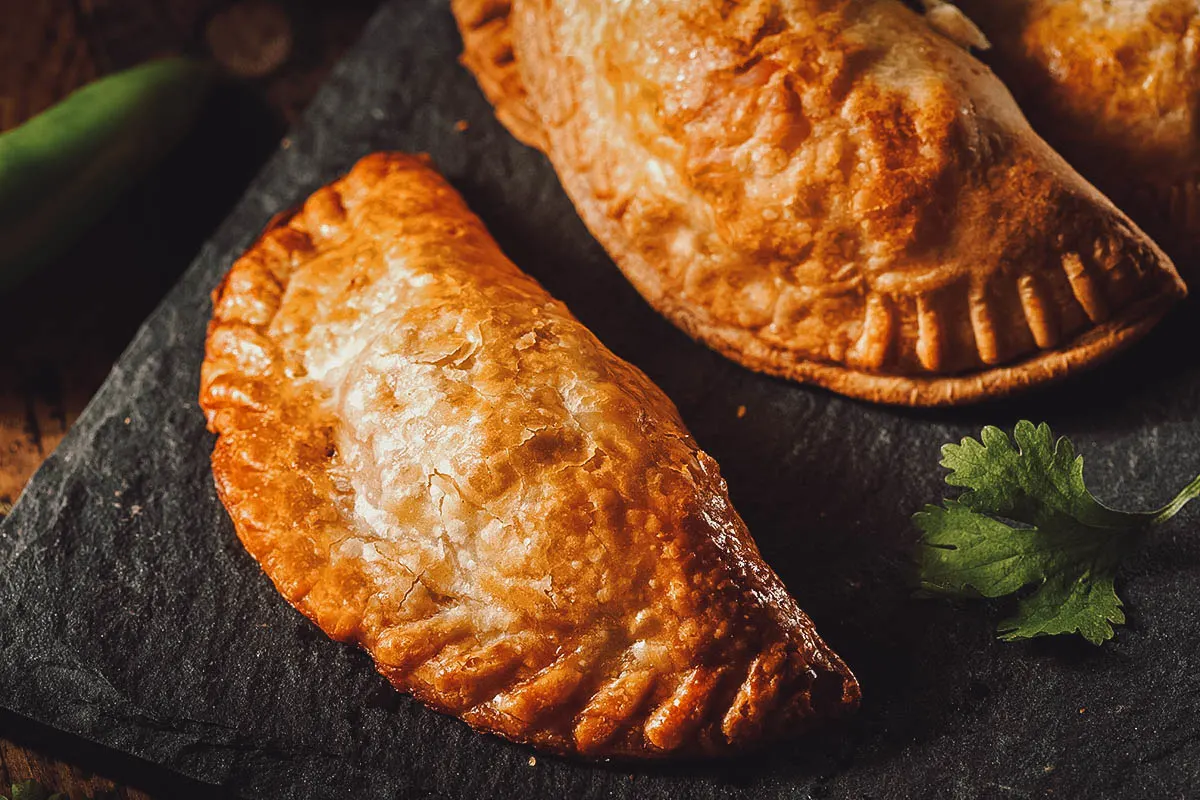
Photo by bhofack2
6. Patacones
Patacones are a type of classic bar food in Costa Rica. It’s a perfect dish for gatherings with family and friends, and is ideal for sharing as it’s vegan and gluten-free.
Shaped like discs, patacones are made from deep-fried mashed green plantains. They have a crispy golden exterior and a soft creamy interior. They have the perfect shape to scoop out sauces and are often served with a small bowl of refried beans, guacamole, sour cream, or pico de gallo.
Patacones are also delicious as a side dish to ceviches (fish marinated in lime or lemon juice with added onions and cilantro).
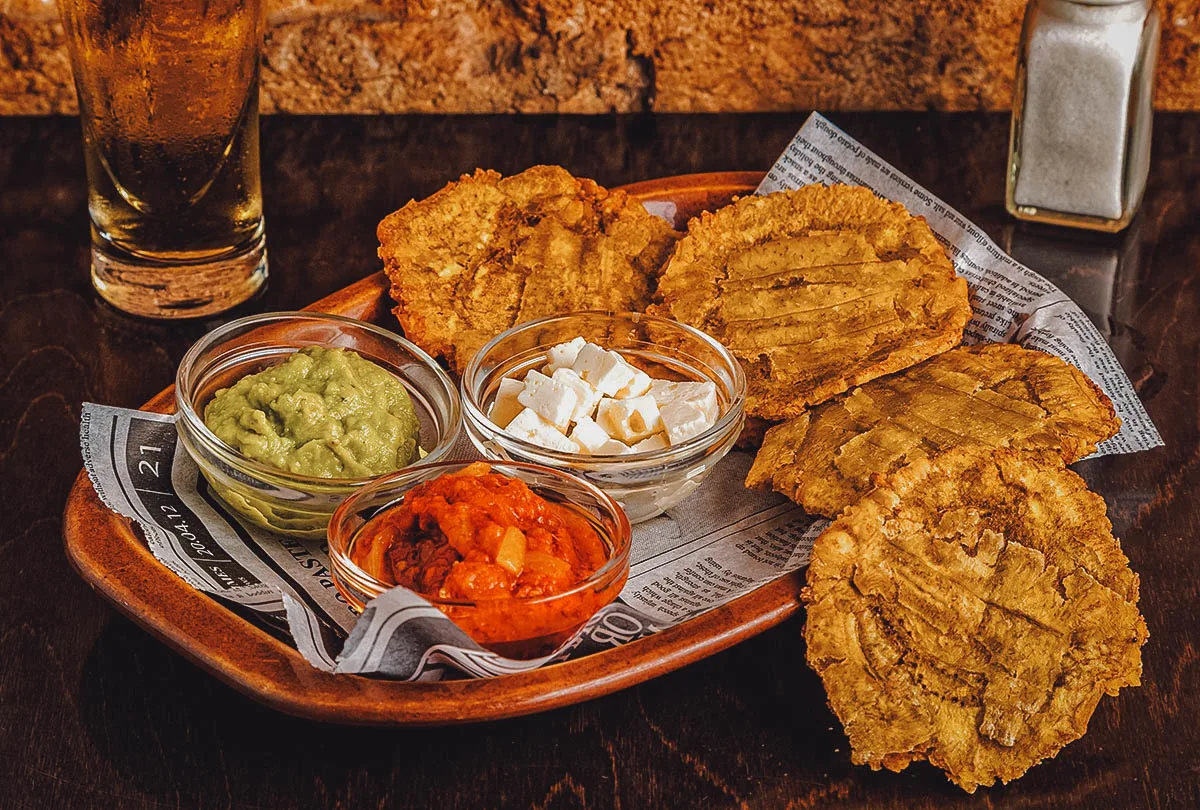
Photo by hansgeel
7. Picadillo
Popular in many Latin American countries like Puerto Rico, the Dominican Republic, and Cuba, picadillo is a traditional Costa Rican dish consisting of a selection of chopped and stewed vegetables and root crops like carrots, potatoes, and green beans. It’s a dish that can be prepared with just vegetables or with the addition of meat like ground beef or pork.
This stew-like dish is a traditional way to prepare food in Costa Rica, taking relevance at the beginning of the 20th century. It’s said to have been born from the last and only dictatorship the country faced in 1917.
The First World War affected the Costa Rican economy and brought difficult times to its people. Costa Ricans from the Central Valley had to rely on locally produced ingredients for nourishment, and make the most of the small quantities of meat available.
Nowadays, picadillo has become an essential and joyful element of Costa Rica’s food traditions. It stands on its own in traditional celebrations and community or family gatherings. It’s typically served as an appetizer over soft corn tortillas known locally as “gallo”.
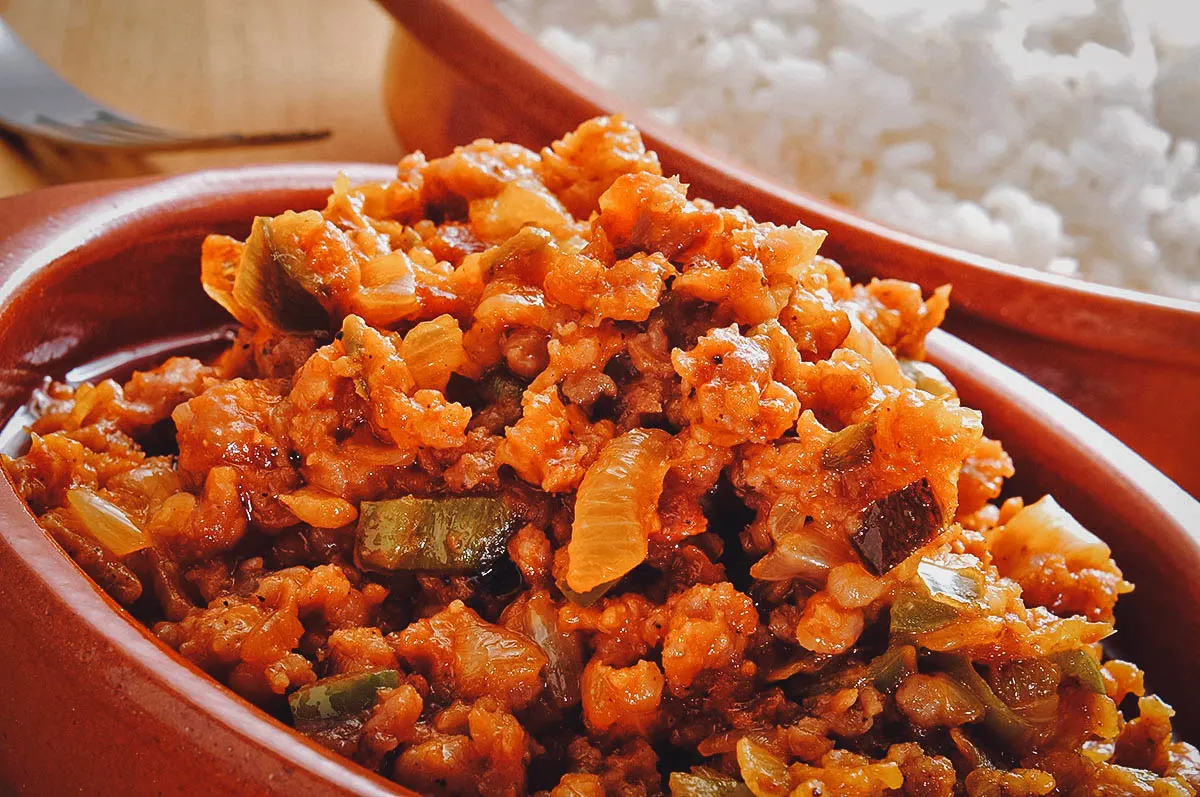
Photo by nito103
8. Tamal
Popular in many Latin American countries like Mexico, Guatemala, Belize, and Cuba, the tamal is without question one of the most remarkable influences from Mesoamerican indigenous cultures.
Made up of corn dough, a tamal is filled with meat like pork or chicken, rice, chickpeas, and vegetables. The dough is wrapped tightly in plantain leaves before being boiled for a few hours until the tamal is fully cooked. Tamales in Costa Rica are usually packed in pairs called piñas.
Families in Costa Rica get together around the first days of December to make small batches to hundreds of tamales. Each family member has a role in the kitchen. Grandmothers prepare the dough while other family members fill the tamales. The most skilled person wraps them while the youngest in the family washes the plantain leaves for their use.
Tamales are meant to be given away to friends and family as gifts. Every Costa Rican family has a variation of the recipe that makes them unique.
The tamal is meant to be a filling meal and traditionally made during Christmas Eve. Nowadays, it can be found all year round and is best enjoyed with a cup of locally-grown coffee.
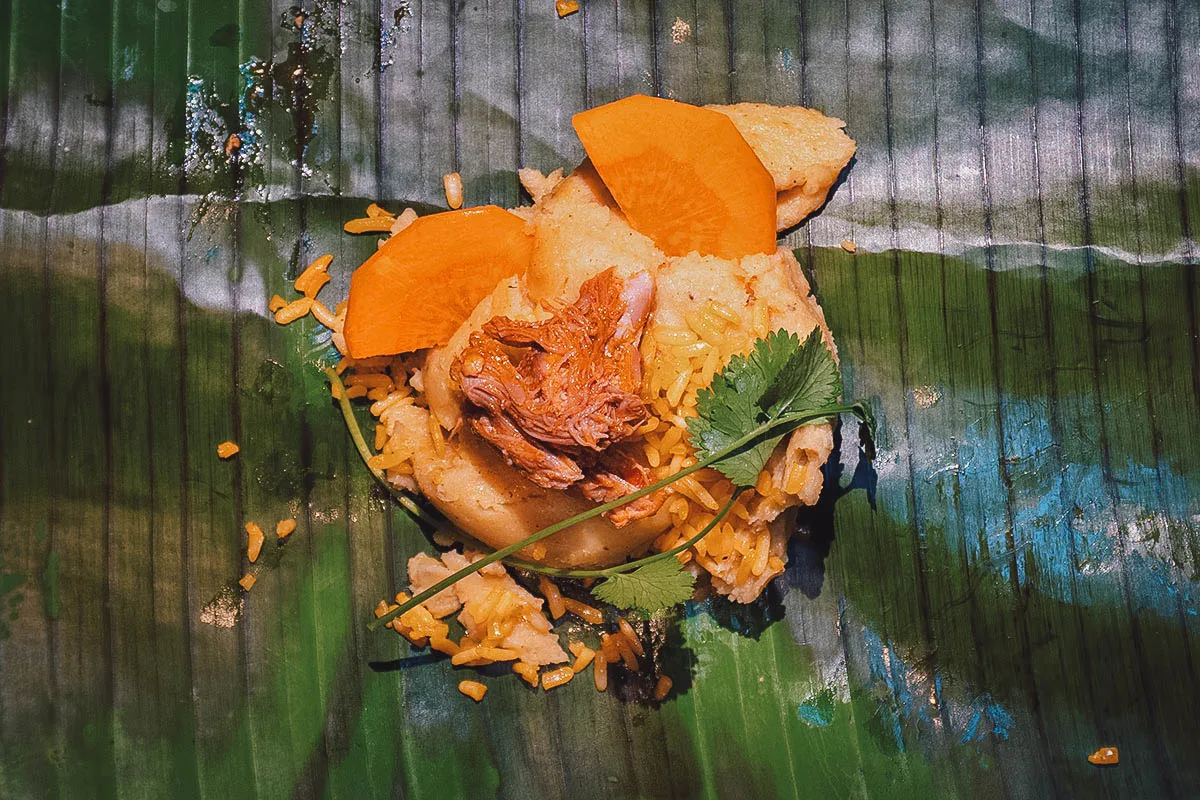
Photo by JoanArturo
9. Gallo Pinto (Rice and Beans)
Locals consider gallo pinto to be the national dish of Costa Rica. It consists of a mixture of cooked rice and beans which is sautéed with vegetables to the right consistency. Gallo pinto is usually eaten for breakfast but you can find it at any time of the day.
The flavors of this beloved Costa Rican rice and beans dish vary depending on where it’s from. Gallo pinto from Guanacaste province for example, tends to taste slightly toasted and more savory compared to the richer and more aromatic versions from San José.
The gallo pinto recipe in San José includes more onion, sweet red pepper, and cilantro. A key ingredient is Salsa Lizano. Similar to Worcestershire sauce, Salsa Lizano is known for its bright cumin and tamarind flavors that make gallo pinto a beloved staple dish to Costa Ricans.
A full Costa Rican breakfast plate typically includes gallo pinto, fried plantains, sausage, eggs, pico de gallo, natilla (sour cream), and fresh or fried cheese. Sometimes, shredded beef is added as well. On its own, gallo pinto makes for a great vegetarian or vegan option so don’t be afraid to ask for substitutions to meet your dietary needs.
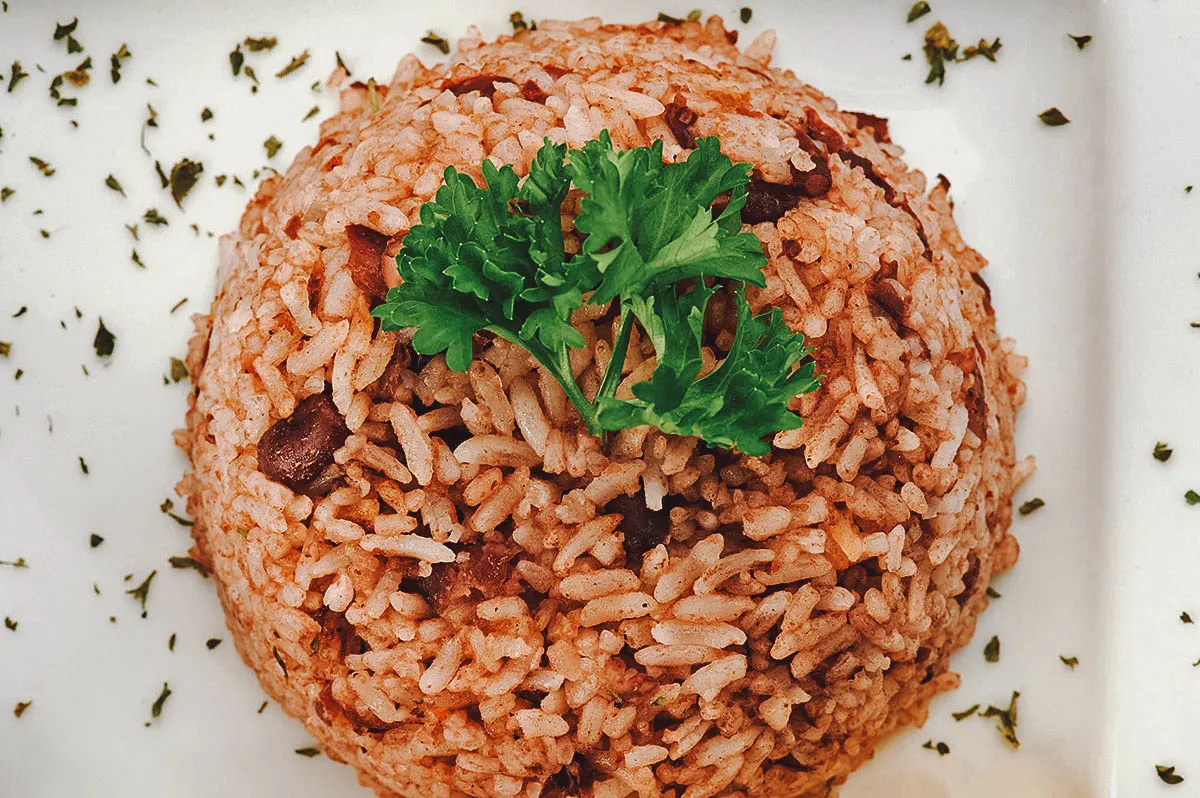
Photo by dimarik
10. Casado
The casado is another great staple of Central Valley Costa Rican food. It’s the lunch option par excellence, containing all the elements for a complete full meal. It’s extremely popular and one of the easiest dishes to find in Costa Rica.
Casado has many components. It consists of white rice, refried beans, black beans, a side of protein (like beef, chicken, fish, egg, or cheese), stewed vegetables (picadillo), fried plantains, a simple salad, and sometimes a cold pasta salad. Costa Ricans typically eat it with Salsa Lizano and a fruit drink called “frescos” or coffee.
At the Central Market in San José, some sodas have a tradition of serving it with a small portion of spaghetti. Any regional Costa Rican market will offer you something special to accompany this affordable lunch. You could also enjoy vegetarian or vegan casado if you ask for it.
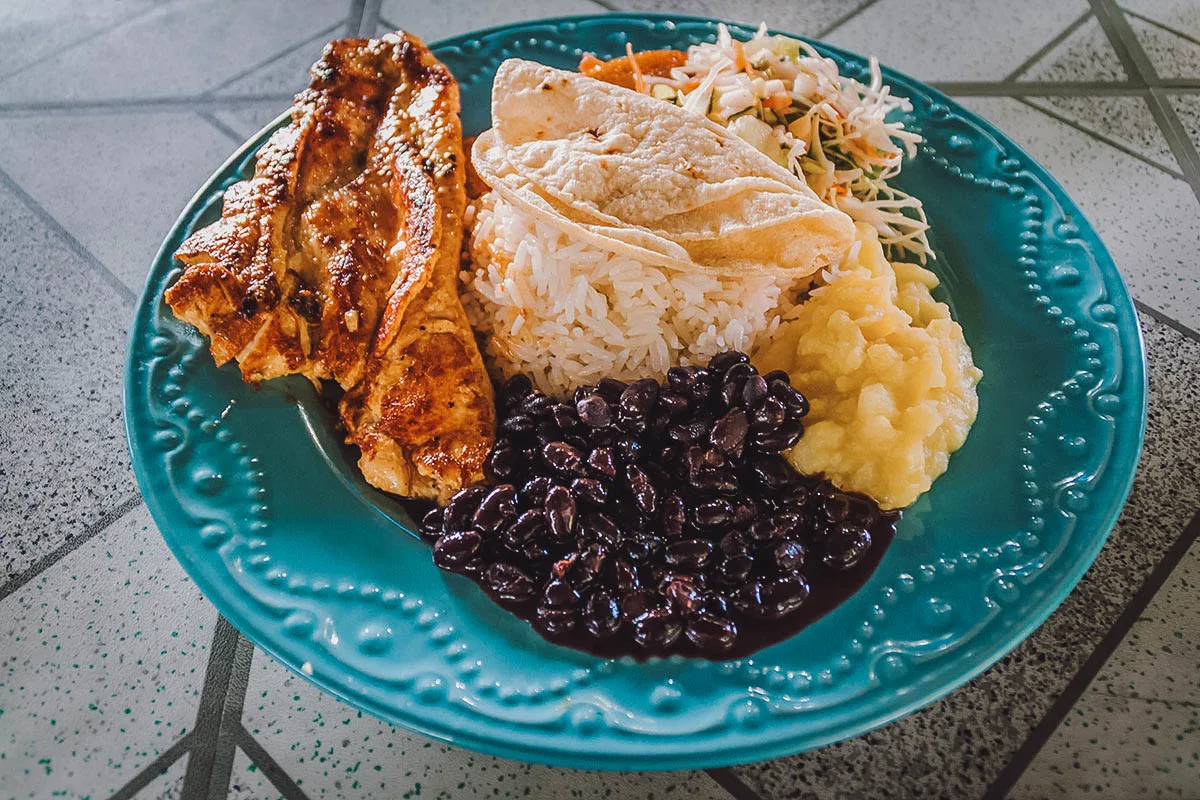
Photo by mathes
11. Olla de Carne (Beef Stew)
There isn’t a more common sight at the Central Market of San José than people enjoying a lunch of olla de carne with white rice. This traditional Costa Rican soup is one of the clearest examples of pre-Hispanic and European influences, using techniques from traditional Spanish cuisine and translating it to local ingredients.
Olla de carne is a soup consisting of lean beef cooked with local vegetables like chayote, tacacos, carrots, onions, cilantro, green plantains, and root vegetables. The soup is simmered for several hours until the vegetables are cooked through and the meat is very tender.
There are two ways Costa Ricans eat olla de carne. One, it can be divided into three separate dishes – the broth, the meat, and the vegetables. And two, it can be enjoyed as one big hearty soup. Either way, it’s always eaten with rice or tortilla.
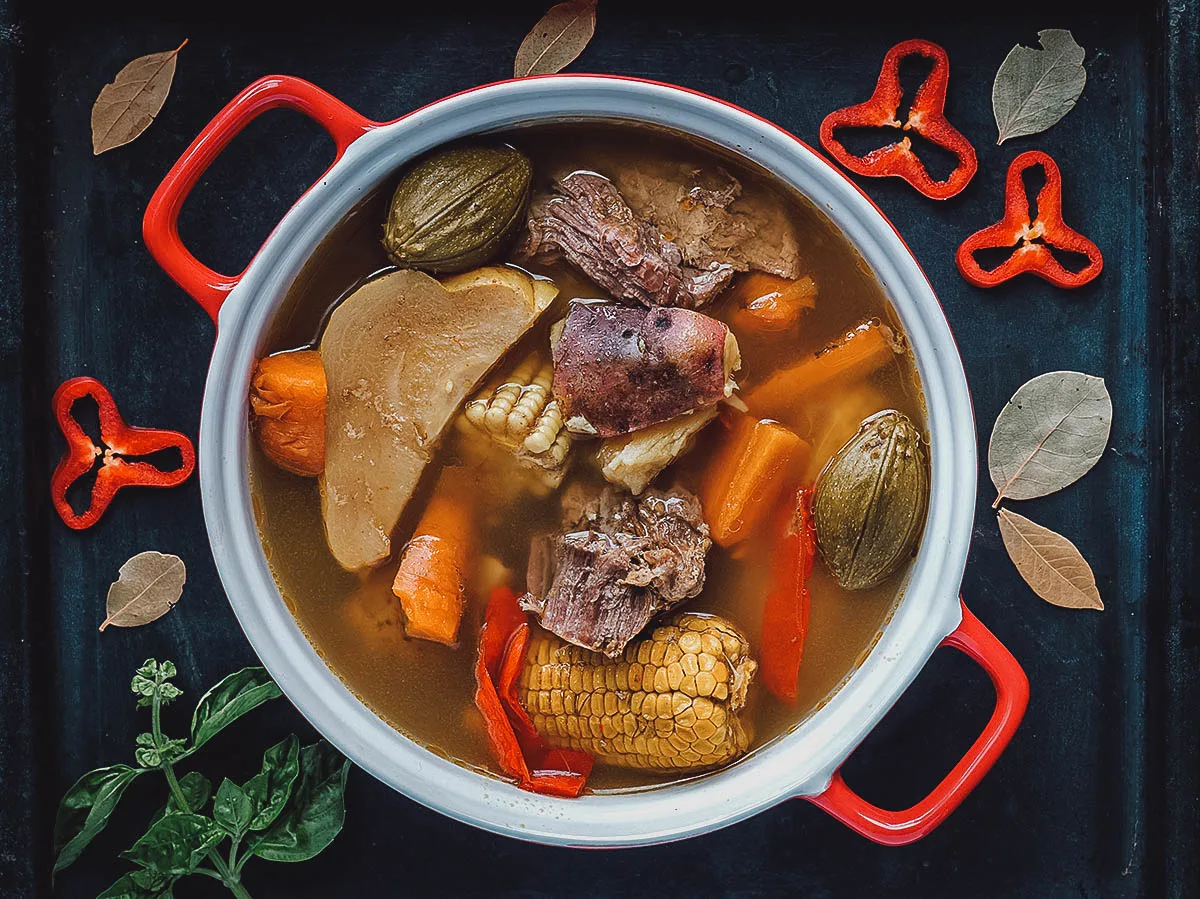
Photo by Marcods
12. Tres Leches
Tres leches is the preferred cake for birthdays and celebrations in Costa Rica. This dessert consists of a light sponge cake soaked overnight in a mixture of condensed milk, evaporated milk, and whole milk, topped with chantilly cream.
This decadent and delicious cake is the perfect finale at any party. It’s available everywhere, at town bakeries, coffee shops, or supermarkets. Some of the most modern versions include flavors like chocolate, dulce de leche, kola, and even specialty coffee.

Photo by anna.pustynnikova
COSTA RICAN FOOD TOURS
It’s pretty clear that no one knows Costa Rican food better than a local, so what better way to experience Costa Rica’s cuisine than by going on a food tour? A knowledgeable local will guide you to the city’s best sodas, markets, and street food stalls so all you have to do is follow and eat. Check out Get Your Guide for list of Costa Rican food tours in different cities throughout the country.
COSTA RICAN COOKING CLASSES
Aside from food tours, another great way to learn about Costa Rica’s cuisine is to take a cooking class. It’s one thing to eat Costa Rican food, but it’s quite another to learn how to actually make it. Working with the various ingredients that go into each dish offers a more intimate look at the cuisine. Check out Cookly for a list of cooking class in Costa Rica.
FINAL THOUGHTS ON COSTA RICAN FOOD
Costa Rica is a memorable place that awaits discovery. If you explore the country from coast to coast, you’ll find delicious Costa Rican food and cordial people at every stop. Costa Rican people are good hosts. They love to show off their country and share stories with you. It’s no wonder why it’s considered one of the friendliest countries in the world.
This humble Costa Rica food guide is just the beginning. Over time, we’ll expand the list and include more of Costa Rica’s must-try dishes. It’s already mouthwatering as it is and we haven’t even talked about other tasty dishes like arroz con pollo (Costa Rican chicken rice), chorreadas (sweet corn pancakes), and rondon (Afro-Caribbean coconut milk soup)!
These Costa Rican dishes will encourage your adventurous side and help you assimilate into the local culture. We recommend that you talk to the locals, try the local food, and enjoy the hospitality of the Costa Rican people. When you’re here, this tropical country will feel like home. Pura vida!
Disclosure
Some of the links in this Costa Rica food guide are affiliate links. If you make a booking, then we’ll make a small commission at no extra expense to you. As always, we only recommend products and services that we use ourselves and firmly believe in. We really appreciate your support as it helps us make more of these free travel and food guides. ¡Gracias!
Cover photo by lenyvavsha. Stock images via Depositphotos.

